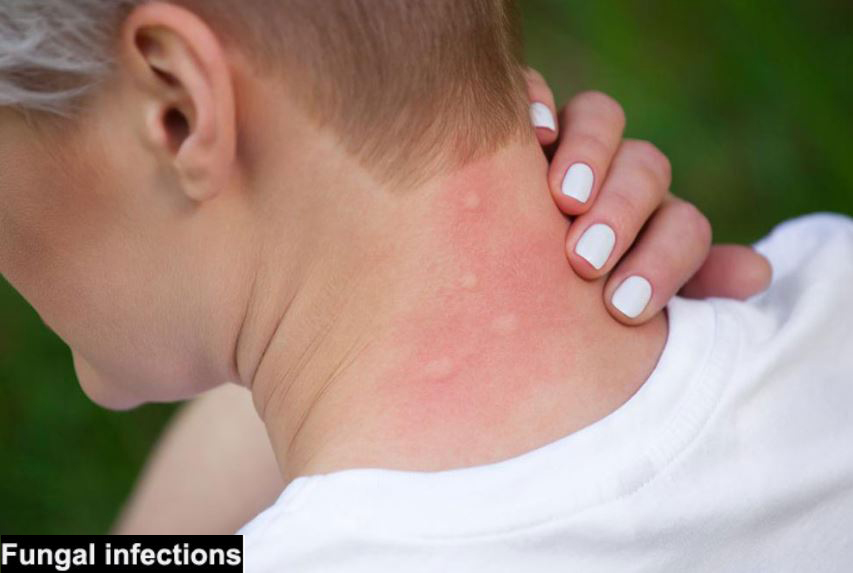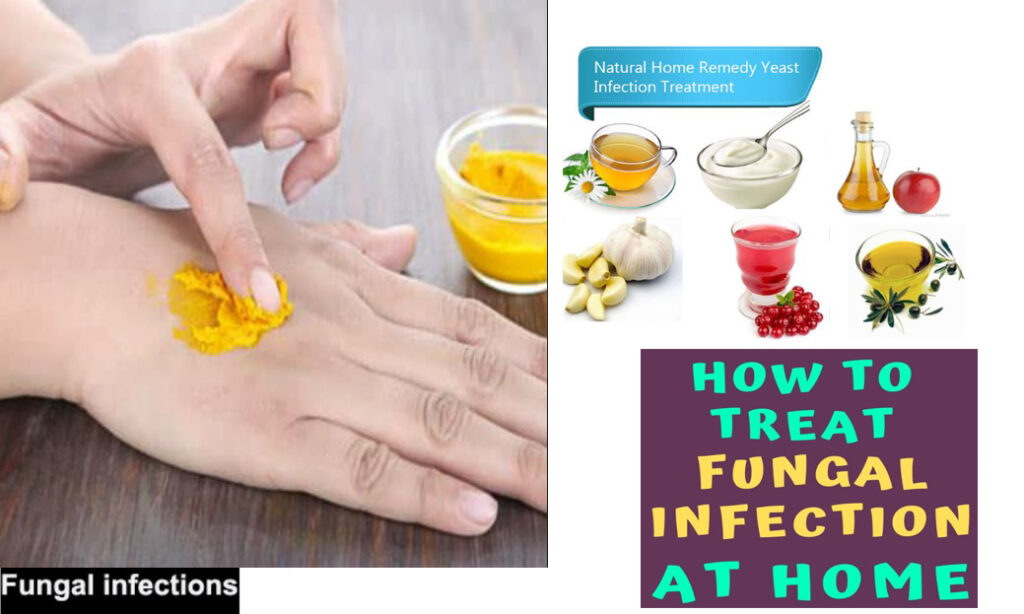Fungal infections on the fingers, commonly known as nail fungus or onychomycosis, can be both uncomfortable and unsightly. These infections can affect not only the appearance of your nails but also lead to more severe health issues if left untreated. In this comprehensive guide, we’ll explore effective tips and remedies for treating fungal infections on fingers, helping you regain healthy nails and peace of mind.
Table of Contents
Understanding Fungal Infections

Fungal infections occur when fungi, such as dermatophytes, yeasts, or molds, invade the skin or nail bed. The risk of developing a fungal infection increases in warm, moist environments, making hands and feet particularly susceptible. Common symptoms include discoloration, thickening of the nail, brittleness, and in some cases, pain.
Prevention is Key
Before diving into treatment options, it’s important to focus on prevention to avoid recurring infections. Here are some preventative measures:
- Keep Your Hands Dry: Fungi thrive in moist environments. After washing your hands, make sure to dry them thoroughly, especially between the fingers and under the nails.
- Maintain Good Hygiene: Regularly wash your hands with soap and water. Keeping nails clean and trimmed can prevent fungi from taking hold.
- Avoid Nail Trauma: Injuries to the nail bed can create an entry point for fungi. Be cautious when handling objects that may cause trauma to your nails.
- Choose Breathable Footwear: If you’re prone to foot fungal infections, wear shoes that allow your feet to breathe and avoid damp environments like public showers.
- Use Antifungal Powder: For those with sweaty hands or feet, consider using antifungal powders to keep the area dry and prevent fungal growth.
Over-the-Counter Treatments
For mild to moderate fungal infections, over-the-counter treatments can be effective. Here are some popular options:
- Antifungal Creams and Ointments: Look for products containing clotrimazole or terbinafine. Apply these directly to the infected area as directed on the packaging.
- Antifungal Nail Lacquers: These are specialized nail polishes designed to treat fungal infections. They create a barrier that helps to eliminate fungi while protecting the nail.
- Medicated Soaks: Soaking your fingers in a solution of warm water and Epsom salt can help soothe the affected area and may assist in loosening debris under the nail.
Home Remedies

In addition to commercial treatments, several home remedies can help combat fungal infections:
- Tea Tree Oil: Known for its antifungal properties, tea tree oil can be applied directly to the affected area. Dilute it with a carrier oil if you have sensitive skin.
- Apple Cider Vinegar: This natural remedy can help restore pH balance and has antifungal properties. Mix equal parts of apple cider vinegar and water, and soak your fingers for 30 minutes daily.
- Garlic: Garlic has natural antifungal properties. Crush a few cloves and mix them with a carrier oil to create a paste, applying it to the infected area.
- Coconut Oil: Rich in medium-chain fatty acids, coconut oil can disrupt fungal cell membranes. Apply it regularly to the infected area.
- Baking Soda: A paste made from baking soda and water can be applied to the nails and skin. It helps to absorb moisture and create an inhospitable environment for fungi.
Prescription Treatments
For more severe cases or persistent infections, prescription treatments may be necessary. Always consult a healthcare professional before starting any new medication. Options include:
- Oral Antifungal Medications: These are often more effective for stubborn infections. Medications like itraconazole or fluconazole may be prescribed.
- Stronger Topical Treatments: Your doctor may recommend stronger antifungal creams or lacquers that require a prescription.
- Laser Treatment: Some dermatologists offer laser therapy, which targets and kills the fungus without harming surrounding tissue.
Lifestyle Changes for Healthy Nails
In addition to treatments, adopting certain lifestyle changes can promote nail health and prevent future infections:
- Healthy Diet: Incorporate a balanced diet rich in vitamins and minerals. Foods high in zinc, vitamin E, and omega-3 fatty acids can support nail health.
- Stay Hydrated: Drink plenty of water to keep your skin and nails hydrated.
- Limit Nail Polish Use: Frequent use of nail polish can trap moisture. Give your nails a break to breathe and recover.
- Avoid Artificial Nails: Artificial nails can trap moisture and lead to infections. If you’re prone to nail fungus, consider avoiding them altogether.
When to See a Doctor

While many fungal infections can be managed at home, it’s crucial to seek medical advice if you notice:
- Severe pain or discomfort
- Signs of spreading infection, such as redness, swelling, or pus
- Changes in the surrounding skin, including warmth or increased sensitivity
- If home treatments do not yield improvement after a few weeks
Maintaining Nail Health Post-Treatment
Once you’ve successfully treated a fungal infection, taking steps to maintain nail health is essential to prevent recurrence:
- Regular Nail Care: Keep your nails trimmed, clean, and well-maintained. This not only improves appearance but also reduces the chance of reinfection.
- Monitor for Recurrence: Keep an eye on your nails for any signs of returning fungus, and address issues promptly.
- Limit Exposure: If you frequent communal showers or pools, consider wearing waterproof sandals to protect your feet from potential exposure to fungi.
- Use Antifungal Products Preventively: If you’re prone to fungal infections, consider using antifungal powders or sprays as a preventive measure.
Conclusion
Fungal infections on the fingers can be a nuisance, but with the right knowledge and tools, they can be effectively treated and prevented. Whether you opt for over-the-counter treatments, natural remedies, or professional medical advice, staying vigilant about hygiene and nail care is key to maintaining healthy nails. By implementing these tips and practices, you can enjoy beautiful, fungus-free fingers once again. If you have any concerns or if the infection persists, don’t hesitate to seek guidance from a healthcare professional.
FAQ:
Fungal Infections on Fingers
1. What causes fungal infections on fingers?
Fungal infections are caused by fungi that invade the nail bed or skin. Common triggers include damp environments, nail injuries, poor hygiene, and compromised immune systems.
2. How can I prevent fungal infections on my fingers?
To prevent infections, keep your hands dry and clean, avoid tight-fitting gloves, and practice good hygiene. Regularly trim your nails and avoid trauma to the nail bed.
3. What are the symptoms of a fungal infection on fingers?
Symptoms may include discoloration (yellow, brown, or white), thickening or brittleness of the nails, separation of the nail from the nail bed, and sometimes pain or swelling around the infected area.
4. What over-the-counter treatments are effective?
Over-the-counter antifungal creams, ointments, and nail lacquers containing clotrimazole or terbinafine are often effective for mild to moderate infections.
5. Are there natural remedies for treating fungal infections?
Yes, natural remedies like tea tree oil, apple cider vinegar, garlic, coconut oil, and baking soda can be effective. However, results may vary, and it’s important to use them consistently.
6. When should I see a doctor?
Consult a healthcare professional if you experience severe pain, signs of spreading infection (like redness or pus), or if your condition doesn’t improve after a few weeks of treatment.
7. Can I still wear nail polish during treatment?
It’s best to avoid nail polish during treatment, as it can trap moisture and inhibit the effectiveness of antifungal treatments. Allow your nails to breathe.
8. How long does it take to treat a fungal infection?
Treatment duration can vary based on the severity of the infection and the method used. Over-the-counter treatments may take several weeks to show improvement, while prescription medications can take longer.
9. Will the infection come back after treatment?
Reinfection is possible, especially if preventive measures aren’t taken. Maintaining good hygiene and nail care is crucial to preventing future infections.
10. Can I get a fungal infection from someone else?
Yes, fungal infections can be contagious. They can spread through direct contact or by sharing items like nail clippers, towels, or shoes. Always practice good hygiene to reduce the risk.
Sure! Here’s a concise list of the pros and cons of treating fungal infections on fingers:
Pros
- Variety of Treatment Options: Multiple treatments available, including over-the-counter and prescription options.
- Natural Remedies: Many people can choose natural treatments that are often gentler on the skin.
- Preventive Measures: Good hygiene and lifestyle changes can help prevent recurrence.
- Non-Invasive: Many antifungal treatments are topical, allowing for easy at-home management.
- Improved Nail Health: Successful treatment can restore nail appearance and reduce discomfort.
Cons
- Time-Consuming: Treatment can take weeks or months to fully resolve the infection.
- Risk of Recurrence: Fungal infections can return if preventive measures aren’t consistently followed.
- Potential Side Effects: Some treatments may cause skin irritation or allergic reactions.
- Effectiveness of Home Remedies: Natural remedies may not work for everyone or for more severe infections.
- Need for Medical Consultation: Persistent infections might require professional evaluation, adding cost and time.
This overview can help you evaluate your options for treating fungal infections effectively!